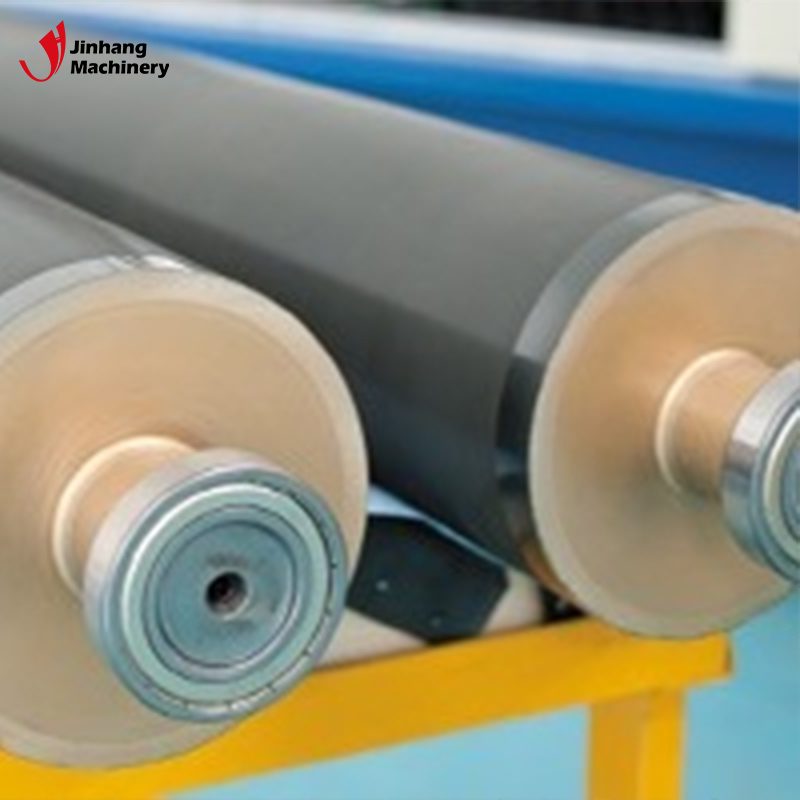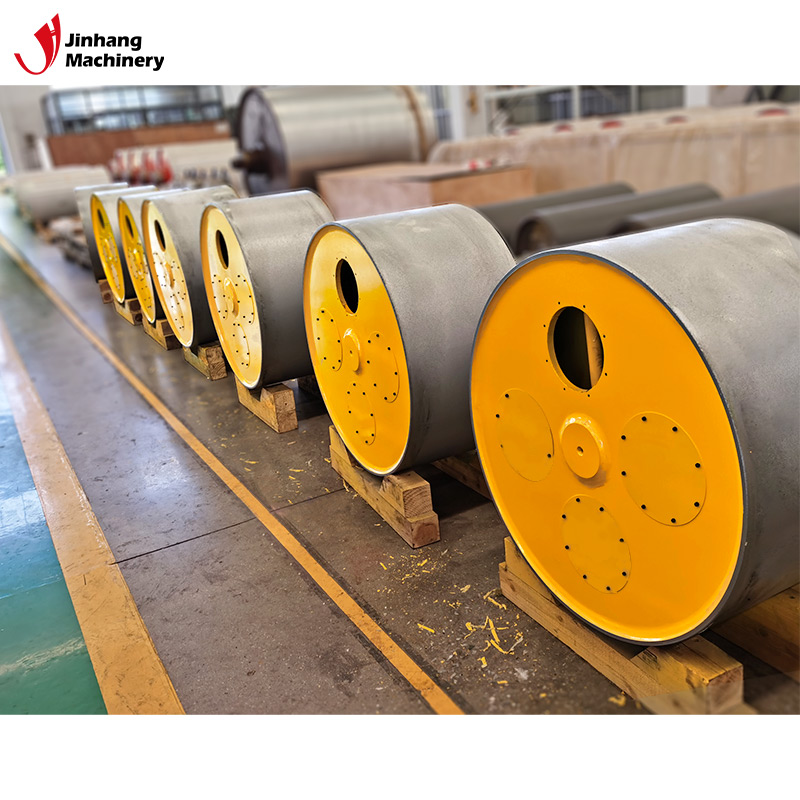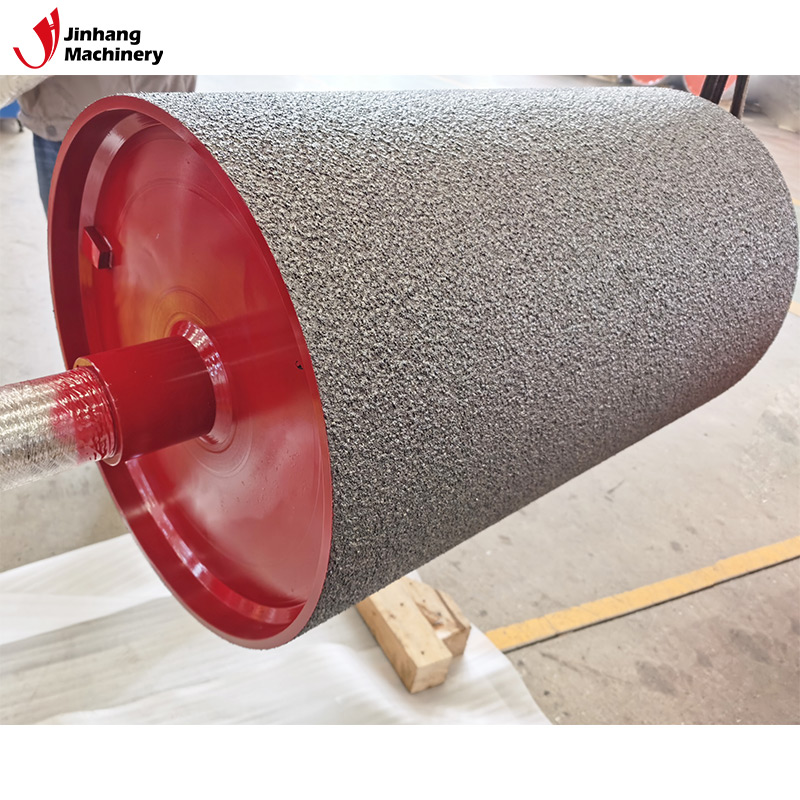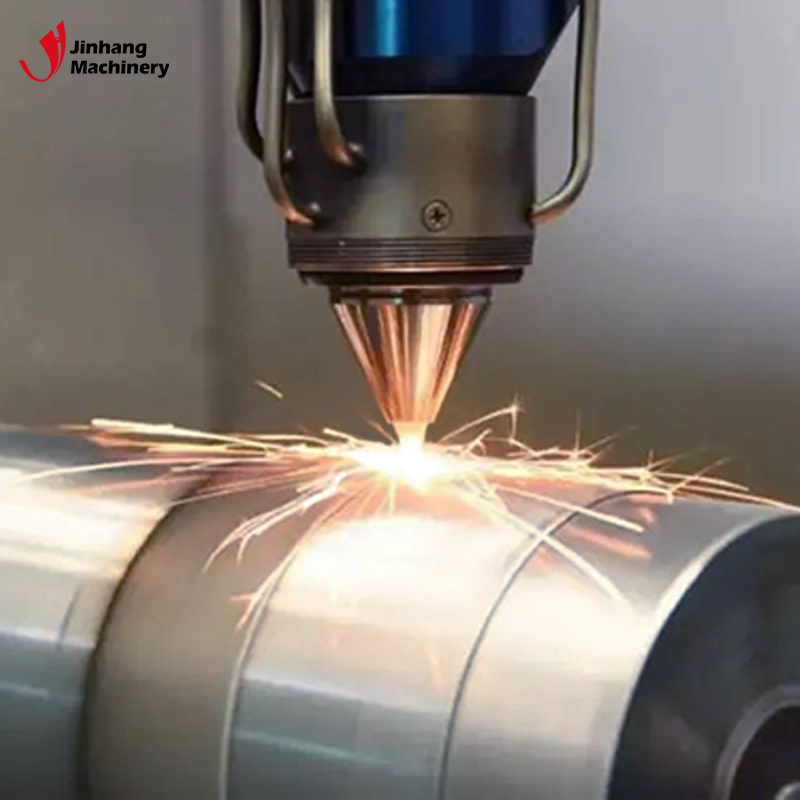What is the surface of a ceramic anilox roller?
In modern industrial production, ceramic anilox rollers are an important precision tool that is widely used in printing, coating, paint, packaging, textiles and other industries. With its fine surface structure and unique functions, ceramic anilox rollers have become an indispensable equipment in industrial production. Understanding the core of ceramic anilox rollers - its surface structure and function - is the key to understanding how this equipment plays an important role in industrial processes. So, what is the surface of a ceramic anilox roller?
This article will delve into the surface characteristics, material composition and how they support various industrial applications of ceramic anilox rollers.

What is a ceramic anilox roller?
A ceramic anilox roller is a roller with a precision-machined surface that is coated with a high-hardness ceramic material and is specially treated to form a regular reticulated structure. These reticulations are composed of hundreds to thousands of tiny grooves, and their density and depth can be designed according to specific application requirements to achieve precise transfer of inks, coatings or other liquids.
What is the surface of a ceramic anilox roller?
1. Ceramic surface material
The surface of ceramic anilox roller is usually made of highly wear-resistant ceramic materials, the most common of which include aluminum oxide (Al₂O₃), chromium oxide (Cr₂O₃) and silicon carbide (SiC). These ceramic materials have extremely high hardness and corrosion resistance, and can withstand various harsh working environments. Compared with traditional metal anilox rollers, ceramic surfaces are not only more wear-resistant, but also have stronger resistance to chemical corrosion, which is particularly suitable for industrial applications that require high precision and high durability.
2. Formation of the reticulation
The surface of the ceramic anilox roller is specially processed to form a regular reticulated structure. These reticulations are usually manufactured by methods such as laser engraving, mechanical engraving or electrospark machining. Depending on the application scenario, the shape, depth and density of the reticulation can be customized according to specific needs. The function of the reticulation is to control the amount of paint or liquid transferred through its structure to ensure consistent quality of each coating or printing.
The design of the reticulation is extremely precise and is usually measured in "line count" (the number of grid lines per inch). The higher the number of lines, the greater the density of the anilox, the smaller the volume of each groove, and the less liquid is transferred. Conversely, the lower the number of lines, the larger the volume of each groove, and the more liquid is transferred. In this way, the anilox roller can precisely control the coating thickness and coating uniformity of the liquid.

What are the main characteristics of the surface of the ceramic anilox roller?
The surface characteristics of the ceramic anilox roller directly affect its performance in various applications. Here are several main characteristics of the surface of the ceramic anilox roller:
1. High hardness
Ceramic materials have extremely high hardness, usually reaching 8 to 9 on the Mohs hardness scale, second only to diamond. Compared with traditional metal rollers or rubber rollers, ceramic anilox rollers have much higher wear resistance. This means that it can maintain the integrity of its surface structure in a high-frequency use environment and operate for a long time without surface wear or deformation.
The high hardness of the surface makes the ceramic anilox roller particularly suitable for those occasions that require precise control of liquid transfer, such as coating thickness control in the coating process, or ink transfer control in the printing process.
2. Corrosion resistance
Ceramic materials have excellent chemical resistance, especially when dealing with chemicals such as acids, alkalis, and solvents. This makes ceramic anilox rollers the first choice in the chemical industry and processes in highly corrosive environments. In these environments, metal rollers are easily corroded, resulting in surface damage and affecting production accuracy, while ceramic rollers can maintain their surface integrity for a long time.
3. High temperature resistance
Another important characteristic of ceramic materials is high temperature resistance. Ceramic anilox rollers can maintain their physical properties in high temperature environments, which allows them to operate for a long time in some high-temperature processes without thermal fatigue or thermal deformation. For example, in some plastic processing and hot pressing processes, ceramic anilox rollers are often used to ensure stable operation under high temperature conditions.
4. Precision
The surface accuracy of ceramic anilox rollers is very high, which is usually reflected in the uniformity and consistency of their mesh structure. The precision-machined mesh ensures that the depth and volume of each groove are exactly the same, thereby ensuring a stable and consistent amount of liquid transfer. This high-precision surface property makes the ceramic anilox roller particularly suitable for processes that require strict coating uniformity, such as precision coating and precision printing.

What are the surface functions of the ceramic anilox roller?
The surface design of the ceramic anilox roller determines its functional diversity. It is not only a mechanical transmission device, but also a precise liquid transfer device. The following are several core functions of the ceramic anilox roller surface:
1. Liquid transfer and control
The surface texture structure of the ceramic anilox roller is its core function. In industrial production, liquid coatings, inks or other substances need to be accurately transferred to the surface of the material, and the ceramic anilox roller achieves this precise control through the texture on its surface. The texture design of different depths and densities allows the transfer amount and transfer rate of the liquid to be controlled, ensuring that the liquid is evenly distributed and no material is wasted.
This precise liquid control is particularly important in coating, printing and coating processes. For example, in the coating process, the ceramic anilox roller can ensure the consistency of the coating thickness and avoid the occurrence of excessive or insufficient thickness.
2. Provide mechanical pressure
In addition to the liquid transfer function, the surface of the ceramic anilox roller can also provide mechanical pressure to ensure the stability of the material during the production process. During the printing and coating process, the roller not only needs to transfer the liquid to the surface of the substrate, but also needs to apply a certain amount of pressure so that the liquid can be evenly distributed and adhere to the material. This pressure is essential to ensure the uniformity and adhesion of the coating.
3. Improve production efficiency
Due to the high hardness and wear resistance of the ceramic anilox roller, its surface can remain intact for a long time and is not easy to be damaged or worn. This means that the use of ceramic anilox rollers can reduce downtime and reduce the frequency of maintenance, thereby improving the efficiency of the entire production line. Compared with metal rollers and rubber rollers that need to be frequently replaced or repaired, the surface performance of ceramic anilox rollers is more stable.
4. Anti-pollution ability
The surface of the ceramic anilox roller has a strong anti-pollution ability, especially when dealing with high-viscosity inks or coatings, and the ceramic surface is not easy to absorb impurities or residues. This helps to maintain the clarity and functionality of the surface texture and reduces the workload of cleaning and maintenance.
What are the common problems on the surface of ceramic anilox roller?
Although the surface performance of ceramic anilox roller is excellent, some problems may still be encountered in actual use.
1. Surface wear
Although ceramic materials have extremely high hardness, long-term high-load use, especially when in contact with highly abrasive materials, may still cause wear on the ceramic surface. The surface reticulation may gradually become shallower, resulting in reduced liquid transfer efficiency. Therefore, regular maintenance and inspection are necessary.
2. Surface cracks
The high hardness of ceramic materials also brings about brittleness problems. When impacted by external forces, the ceramic surface may crack or break. This is particularly common during improper operation or transportation. Once cracks appear on the surface, the performance of the anilox roller will be seriously affected and needs to be replaced or repaired immediately.
3. Cleaning problems
Although the ceramic surface is resistant to pollution, ink or paint residues may still accumulate on the surface after long-term use. If not cleaned in time, these residues may clog the reticulation structure and affect the accuracy of liquid transfer. Therefore, regular cleaning work is also essential.

Customized Rolls for Mining, Packaging & Automotive Testing Industries
JH Machinery manufactures custom rolls designed specifically for the mining, packaging, and automotive testing industries. Our extensive product range includes tungsten carbide-coated, polyurethane, and ceramic anilox rollers with unique coatings or surface treatments to fit your industrial applications. We ensure low prices, bulk discounts, and flexible order quantities through direct sales from our China factory. Our commitment to quality and on-time delivery has made us a preferred supplier worldwide!
